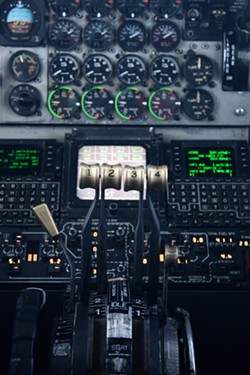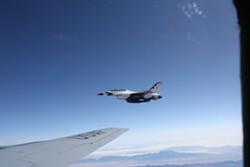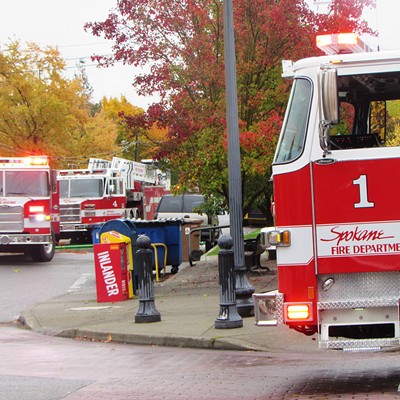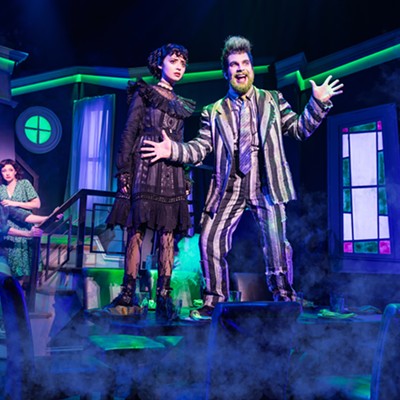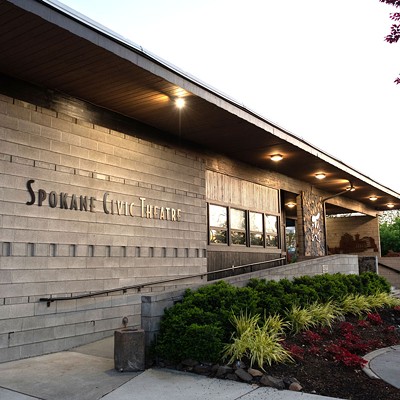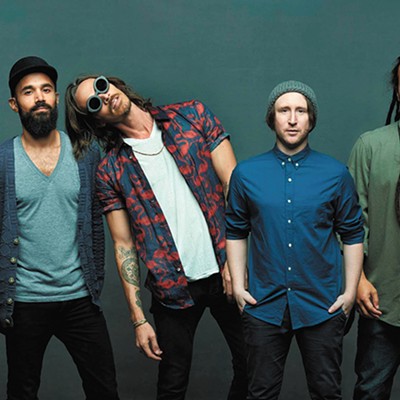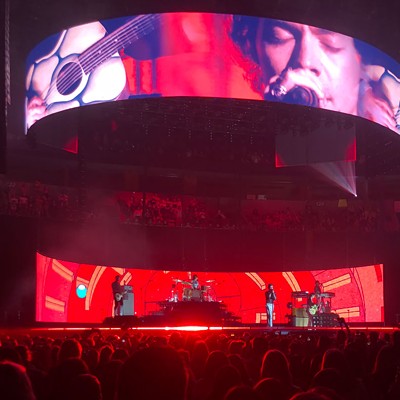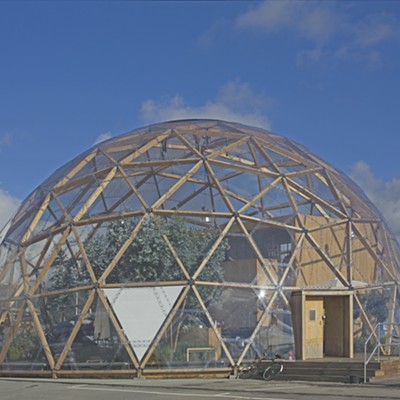Friday, October 13, 2017
Fairchild team seamlessly runs a gas station at 22,000 feet
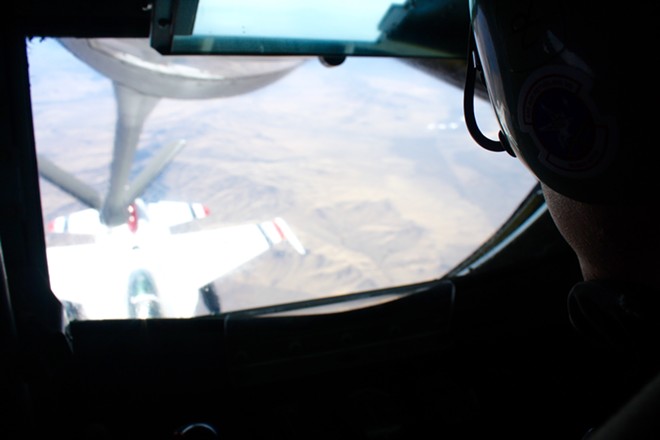
Samantha Wohlfeil photo
Staff Sgt. Travis Peirce operates the boom at the back of a KC-135 Stratotanker, refueling a Thunderbird fighter jet over Nevada on Thursday, Oct. 12.
On our slow descent back to Fairchild Air Force Base after refueling the Thunderbirds show fighter planes mid-flight above Nevada on Thursday morning, I ask the two pilots steering this KC-135 Stratotanker what it's like to fly the 1962-vintage plane.
"I like to think of these like a '60s muscle car – it doesn't turn very well, but it goes well in a straight line, and has a lot of power," says 1st Lt. Adam Less.
At every stage of this refueling flight, with local media tagging along to watch a mission normally run by just two pilots and a boom operator, there's a reminder of old mixing with new.
Hints of the plane's age are everywhere: the color of the mint-green insulation coating the tube-shaped body of the plane; the labels for gauges and switches in the cockpit, printed in the Futura font, popular at the time these planes were built; the bronze-gold color of the throttle.
The thriftiness of maintaining these more than $40-million-apiece gas stations in the sky, which are stripped of paint, taken apart down to the bolts and rebuilt every five years, makes the contrast with the new more evident.
These old workhorses still manage to fuel planes incredibly quickly, without the need to land, which expands the military's ability to get planes anywhere around the globe in hours. Though the F-16 fighter jets fueled up on Thursday are part of the military's demonstration team, the Thunderbirds, they demonstrated how fast the fueling process can go.
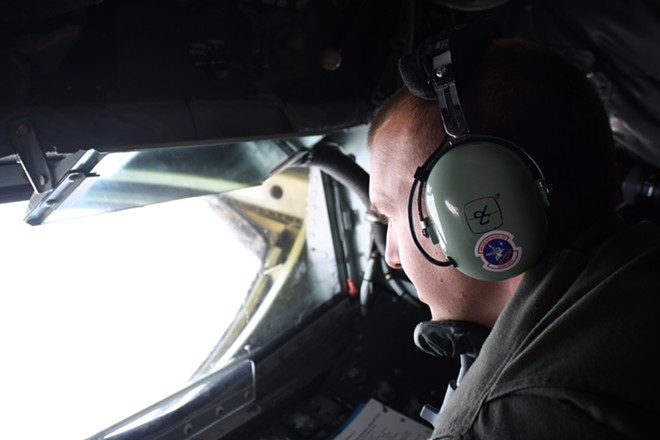
Samantha Wohlfeil photo
Staff Sgt. Travis Peirce uses a chin rest and mirrors as he guides a fuel boom with two joysticks from the belly of a KC-135 on Thursday.
At 22,000 feet, the shiny, newer planes take turns sidling up to the underbelly of the KC-135, where boom operator Staff Sgt. Travis Peirce lays on his belly, ready to direct the boom the last few feet to contact with their receiving equipment and drop 3,000 pounds of fuel in what feels like the blink of an eye. Less than a minute after contact, each Thunderbird disconnects and the next in line gracefully moves over to fill up.
Peirce, who's been a boom operator for six years at Fairchild, and has at least another three years here, isn't fazed as reporters and photographers scramble down the steps, laying down on either side of him and snapping photos and video of the fueling as fast as they can.
On days like today, when the weather is nice and the view out the back window is of mountains giving way to the desert and an open horizon, Peirce says he feels like he's got the easiest job in the world.
Fairchild has more KC-135s than any other base in the country, with 44 based out of this area, says 2nd Lt. Kaila Bryant, who works in Fairchild's 92nd Air Refueling Wing public affairs.
The planes aren't only used for refueling, though that's their main purpose. They can be used to fly passengers when needed, and can be turned into flying hospitals to carry injured soldiers to military hospitals around the world.
While the crews like flying these planes, there are a few downsides.
With newer tankers, the boom operators don't have to crawl on their stomachs at the back of the plane, lying underneath a dozen bright-yellow tanks of oxygen to fuel up other planes. Instead, they operate the boom from a computer screen.
There's also little room for error in landing a plane like this: bank more than 4 degrees to either side while landing, and you could drag an engine, Less says.
But where possible, new technology has been blended with the old to help guide the crew.
In the cockpit, where there are no cupholders but ashtrays came standard, texting pads allow the pilots to communicate with air traffic control if needed, explains Captain David Leibrand, and they have satellite phones and other tools if necessary.
As we reach about 13,000 feet, Less notes a dusting of snow on the ground about 80 miles south of Spokane.
"Where is that?" he asks.
"Huh. Must be near Pullman?" Leibrand posits.
Between flipping switches to maintain altitude and monitoring both physical and digital gauges, Leibrand and Less intermittently pull out tablets that show the course for today's flight and the equivalent of a road map for the sky.
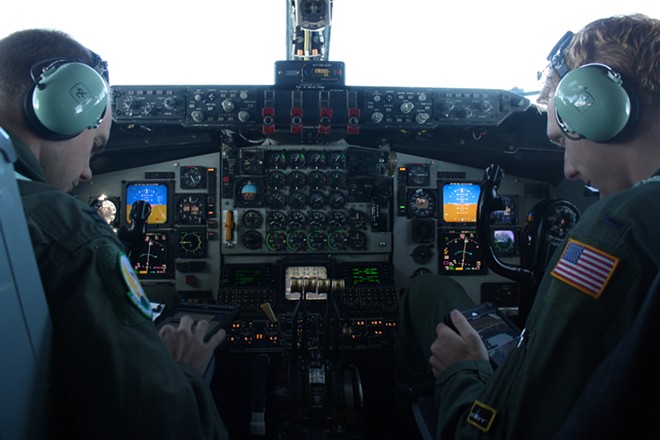
Samantha Wohlfeil photo
Captain David Leibrand, left, and 1st Lt. Adam Less look over tablets with Thursday's flight plan.
"You're allowed to 'off-road,'" Leibrand explains of the lines that planes are meant to follow through airspace, "but it helps if you've got a map to start."
The pilots are lucky if they get sent out on one refueling flight a week, so they're thankful for the chance to get out and cut through the towering, white clouds as air traffic control directs three or four planes, including our "Zags 75," to the ground.
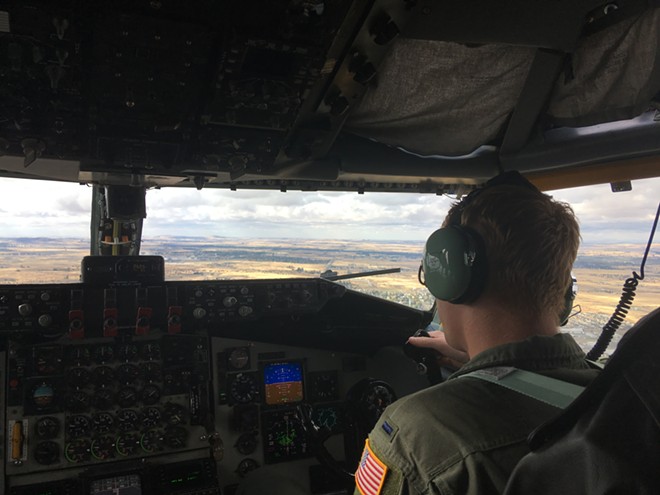
Samantha Wohlfeil photo
Pilot Adam Less monitors conditions as his co-pilot David Leibrand guides a KC-135 Stratotanker toward Fairchild Air Force Base.
Tags: news , Fairchild , Fairchild Air Force Base , air refueling , KC-135 , Stratotanker , Thunderbirds , Air Force , Spokane , Washington , Nevada , Image

